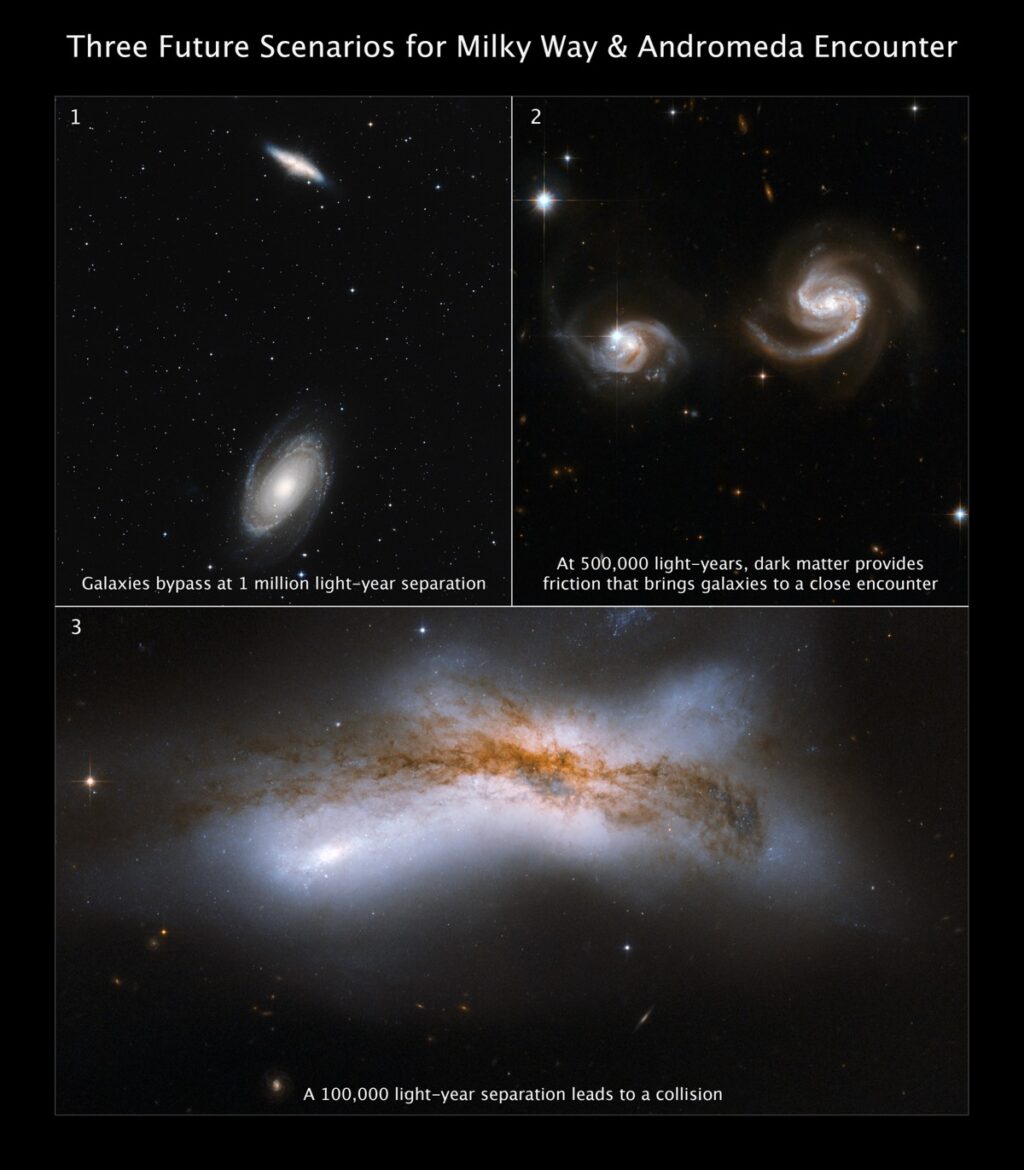Astronomers ran 100,000 computer simulations using combined Hubble/Gaia space telescope data.
100,000 computer simulations reveal Milky Way's fate—and it might not be what we thought.
It's been textbook knowledge for over a century that our Milky Way galaxy is doomed to collide with another large spiral galaxy, Andromeda, in the next 5 billion years and merge into one even bigger galaxy. But a fresh analysis published in the journal Nature Astronomy is casting that longstanding narrative in a more uncertain light. The authors conclude that the likelihood of this collision and merger is closer to the odds of a coin flip, with a roughly 50 percent probability that the two galaxies will avoid such an event during the next 10 billion years.
Both the Milky Way and the Andromeda galaxies (M31) are part of what's known as the Local Group (LG), which also hosts other smaller galaxies (some not yet discovered) as well as dark matter (per the prevailing standard cosmological model). Both already have remnants of past mergers and interactions with other galaxies, according to the authors.
"Predicting future mergers requires knowledge about the present coordinates, velocities, and masses of the systems partaking in the interaction," the authors wrote. That involves not just the gravitational force between them but also dynamical friction. It's the latter that dominates when galaxies are headed toward a merger, since it causes galactic orbits to decay.
This latest analysis is the result of combining data from the Hubble Space Telescope and the European Space Agency's (ESA) Gaia space telescope to perform 100,000 Monte Carlo computer simulations, taking into account not just the Milky Way and Andromeda but the full LG system. Those simulations yielded a very different prediction: There is approximately a 50/50 chance of the galaxies colliding within the next 10 billion years. There is still a 2 percent chance that they will collide in the next 4 to 5 billion years. "Based on the best available data, the fate of our galaxy is still completely open," the authors concluded.

One confounding factor comes from two other LG galaxies: M33, a satellite galaxy, and the Large Magellanic Cloud (LMC). The simulations revealed that the former increases the likelihood of a collision, but this is countered by the fact that the LMC's orbit runs perpendicular to the Milky Way/Andromeda orbit.
"The Milky Way and Andromeda alone would remain in the same plane as they orbit each other, but this doesn't mean they need to crash. They could still go past each other,” said co-author Till Sawala of the University of Helsinki in Finland. “The extra mass of Andromeda’s satellite galaxy M33 pulls the Milky Way a little bit more towards it. However, we also show that the LMC pulls the Milky Way off the orbital plane and away from Andromeda. It doesn't mean that the LMC will save us from that merger, but it makes it a bit less likely.”
So is it time to rewrite the textbooks? Not quite yet. More data and even more analysis is needed to confirm these latest findings. “It's somewhat ironic that, despite the addition of more precise Hubble data taken in recent years, we are now less certain about the outcome of a potential collision," said Sawala. "That’s because of the more complex analysis and because we consider it a more complete system. But the only way to get to a new prediction about the eventual fate of the Milky Way will be with even better data.”
DOI: Nature Astronomy, 2025. 10.1038/s41550-025-02563-1 (About DOIs).
Hope you enjoyed this news post.
Thank you for appreciating my time and effort posting news every day for many years.
News posts... 2023: 5,800+ | 2024: 5,700+ | 2025 (till end of May): 2,377
RIP Matrix | Farewell my friend
- phen0men4
-

 1
1



3175x175(CURRENT).thumb.jpg.b05acc060982b36f5891ba728e6d953c.jpg)
Recommended Comments
Join the conversation
You can post now and register later. If you have an account, sign in now to post with your account.
Note: Your post will require moderator approval before it will be visible.